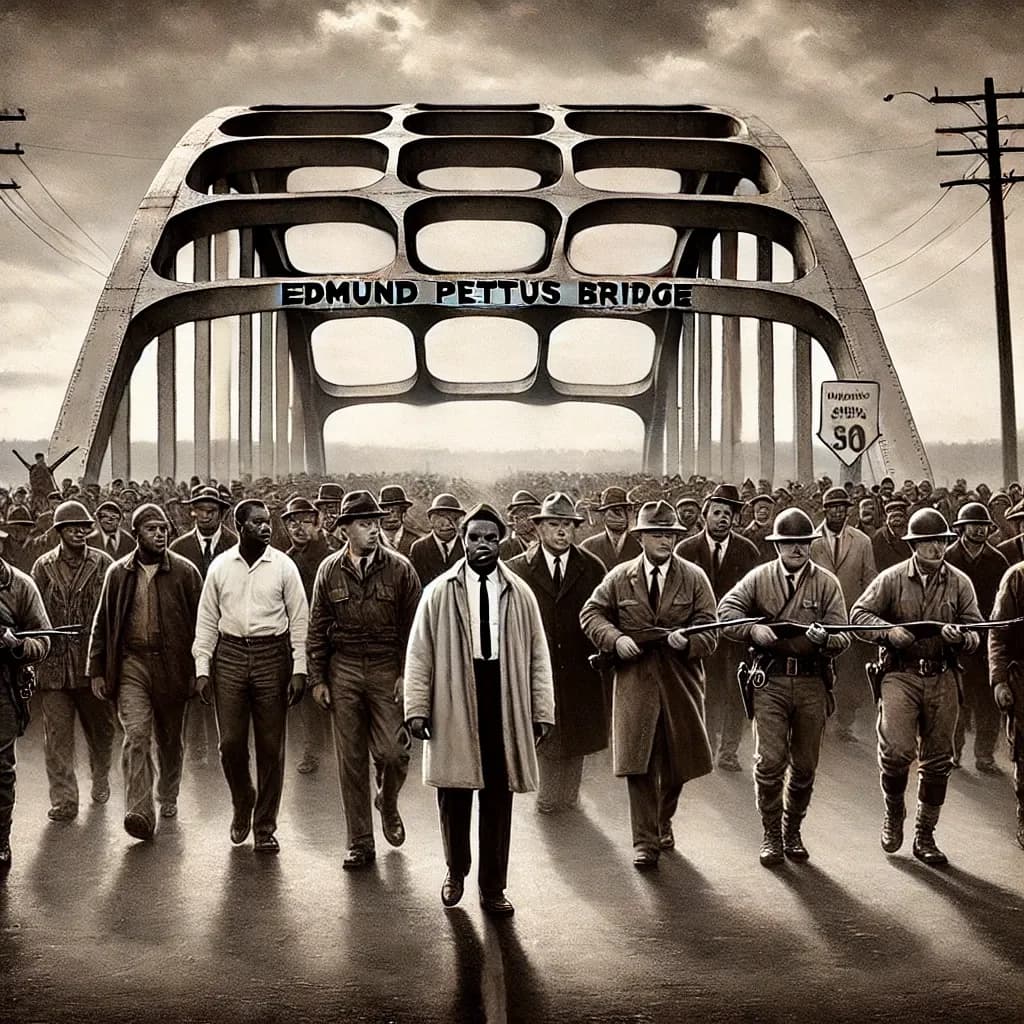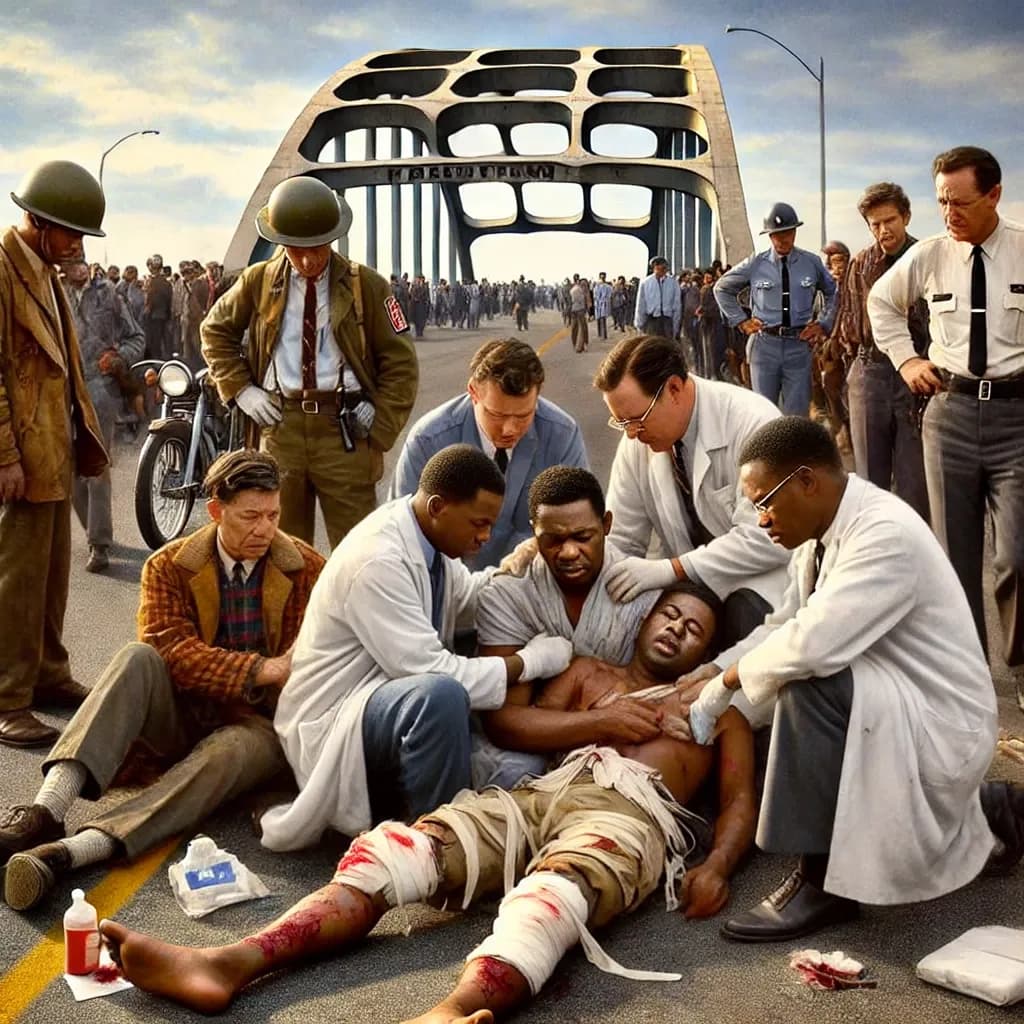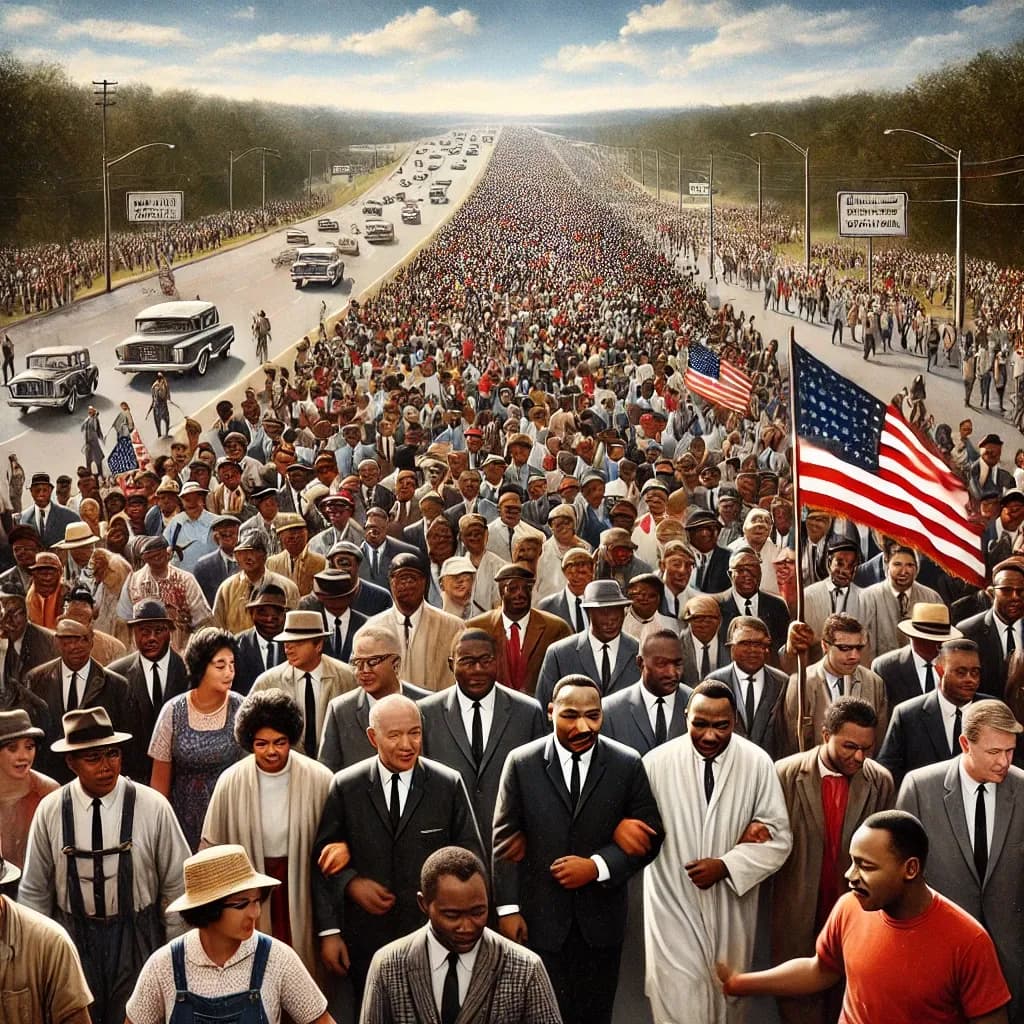On March 7, 1965, civil rights activists, including John Lewis and Hosea Williams, led a peaceful march from Selma to Montgomery, Alabama, to demand voting rights for African Americans. As they attempted to cross the Edmund Pettus Bridge, they were met with brutal force by Alabama state troopers and local law enforcement. This day, now known as "Bloody Sunday," became a turning point in the civil rights movement and played a crucial role in the eventual passage of the Voting Rights Act of 1965.

The Struggle for Voting Rights
Before the events of Bloody Sunday, African Americans across the South faced immense barriers to voting, including literacy tests, poll taxes, and intimidation tactics designed to suppress their political participation. The Student Nonviolent Coordinating Committee (SNCC) and the Southern Christian Leadership Conference (SCLC) organized efforts to combat these injustices, culminating in the Selma to Montgomery march. The goal was to bring national attention to the rampant voter suppression and pressure the federal government to take action.
As marchers set out from Selma, they were resolute in their commitment to nonviolent protest. However, their path was blocked by law enforcement officials who ordered them to disperse. When the marchers refused, troopers launched a vicious assault using clubs, whips, and tear gas. Many were beaten to the ground, and John Lewis, who would later become a congressman and a symbol of the civil rights movement, suffered a fractured skull. The horrifying images of the attack, broadcast across the country, shocked the conscience of the nation.

National Outrage and Political Response
The violence of Bloody Sunday provoked widespread condemnation. News footage and photographs of the unarmed marchers being savagely beaten galvanized public opinion and intensified calls for federal intervention. Civil rights leaders, including Dr. Martin Luther King Jr., called for another march, which took place on March 9 but was turned around in a tactical retreat. President Lyndon B. Johnson soon addressed the nation, expressing his support for voting rights and urging Congress to act.
In response to the growing pressure, Congress passed the Voting Rights Act on August 6, 1965. This landmark legislation outlawed discriminatory voting practices, such as literacy tests and other barriers used to disenfranchise Black voters. It also authorized federal oversight of elections in areas with a history of voter suppression. The law was a monumental victory for the civil rights movement and a direct result of the courage displayed by those who marched in Selma.
The Lasting Impact of Bloody Sunday

The legacy of Bloody Sunday endures as a defining moment in the struggle for civil rights in the United States. The events of that day demonstrated the power of peaceful protest in effecting social and political change. The Voting Rights Act of 1965 transformed American democracy, ensuring greater access to the ballot for millions of Black citizens. However, the fight for voting rights continues, as subsequent Supreme Court decisions and state-level policies have weakened some of the protections established by the Act.
Each year, political leaders, activists, and citizens gather in Selma to commemorate Bloody Sunday and reaffirm their commitment to justice and equality. The march across the Edmund Pettus Bridge serves as a reminder of the sacrifices made by those who risked their lives for the fundamental right to vote. Their bravery continues to inspire movements for racial and social justice, both in the United States and around the world.